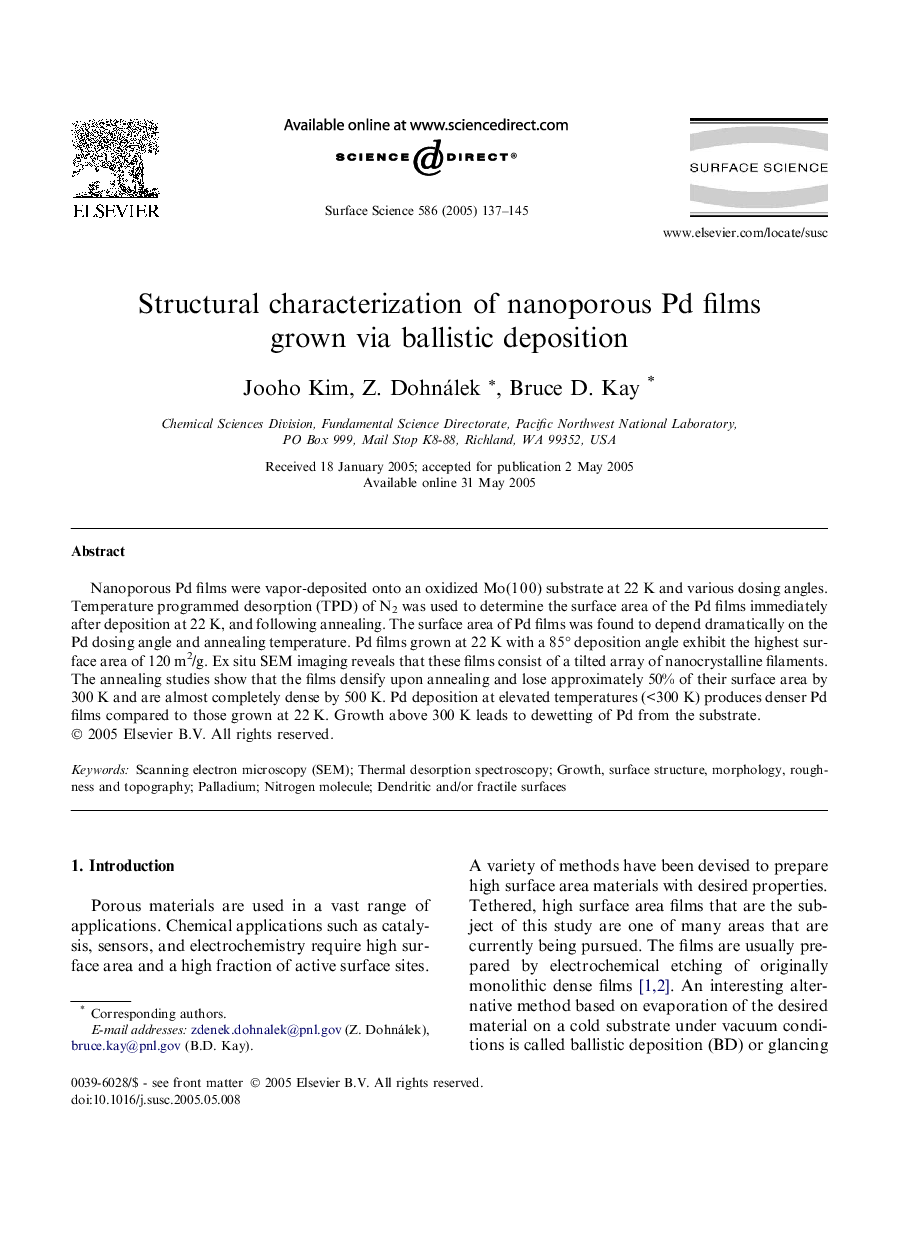| Article ID | Journal | Published Year | Pages | File Type |
|---|---|---|---|---|
| 9595059 | Surface Science | 2005 | 9 Pages |
Abstract
Nanoporous Pd films were vapor-deposited onto an oxidized Mo(1 0 0) substrate at 22 K and various dosing angles. Temperature programmed desorption (TPD) of N2 was used to determine the surface area of the Pd films immediately after deposition at 22 K, and following annealing. The surface area of Pd films was found to depend dramatically on the Pd dosing angle and annealing temperature. Pd films grown at 22 K with a 85° deposition angle exhibit the highest surface area of 120 m2/g. Ex situ SEM imaging reveals that these films consist of a tilted array of nanocrystalline filaments. The annealing studies show that the films densify upon annealing and lose approximately 50% of their surface area by 300 K and are almost completely dense by 500 K. Pd deposition at elevated temperatures (<300 K) produces denser Pd films compared to those grown at 22 K. Growth above 300 K leads to dewetting of Pd from the substrate.
Keywords
Related Topics
Physical Sciences and Engineering
Chemistry
Physical and Theoretical Chemistry
Authors
Jooho Kim, Z. Dohnálek, Bruce D. Kay,
